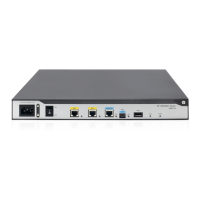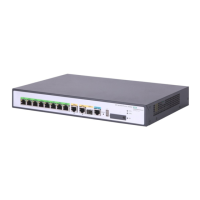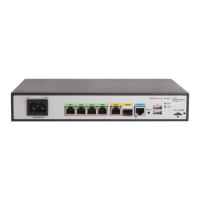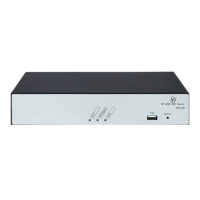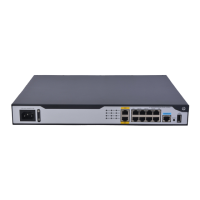62
# Enable the DHCPv6 server feature.
[RouterB-Virtual-Template10] ipv6 dhcp select server
[RouterB-Virtual-Template10] quit
# Enable the PPPoE sever on GigabitEthernet 1/0/1, and bind the interface to interface Virtual-Template
10.
[RouterB] interface gigabitethernet 1/0/1
[RouterB-GigabitEthernet1/0/1] pppoe-server bind virtual-template 10
[RouterB-GigabitEthernet1/0/1] quit
# Create prefix pool 6, and specify prefix 4001::/32 with assigned prefix length 42.
[RouterB] ipv6 dhcp prefix-pool 6 prefix 4001::/32 assign-len 42
# Create address pool 1, and apply prefix pool 6 to address pool 1.
[RouterB] ipv6 dhcp pool pool1
[RouterB-dhcp6-pool-pool1] prefix-pool 6
[Router-dhcp6-pool-pool1] quit
# Configure a PPPoE user.
[RouterB] local-user user1 class network
[RouterB-luser-network-user1] password simple pass1
[RouterB-luser-network-user1] service-type ppp
[RouterB-luser-network-user1] quit
# Configure an IPv6 pool attribute authorized to the user in the ISP domain.
[RouterB] domain system
[RouterB-isp-system] authorization-attribute ipv6-pool pool1
Verifying the configuration
# Verify that Router B has assigned a prefix to Router A.
[RouterB] display ipv6 dhcp server pd-in-use
Pool: 1
IPv6 prefix Type Lease expiration
4001::1/42 Auto(O) Jul 10 19:45:01 2013
Then, Router A can assign the prefix 4001::1/42 to the host who uses the prefix to generate an IPv6
global unicast address.
PPPoE client in permanent mode configuration example
Network requirements
As shown in Figure 18, Router A serves as a PPPoE server. Configure Router B as a PPPoE client operating
in permanent mode.
Figure 18 Network diagram
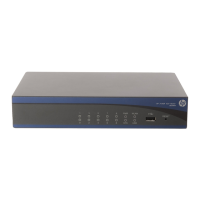
